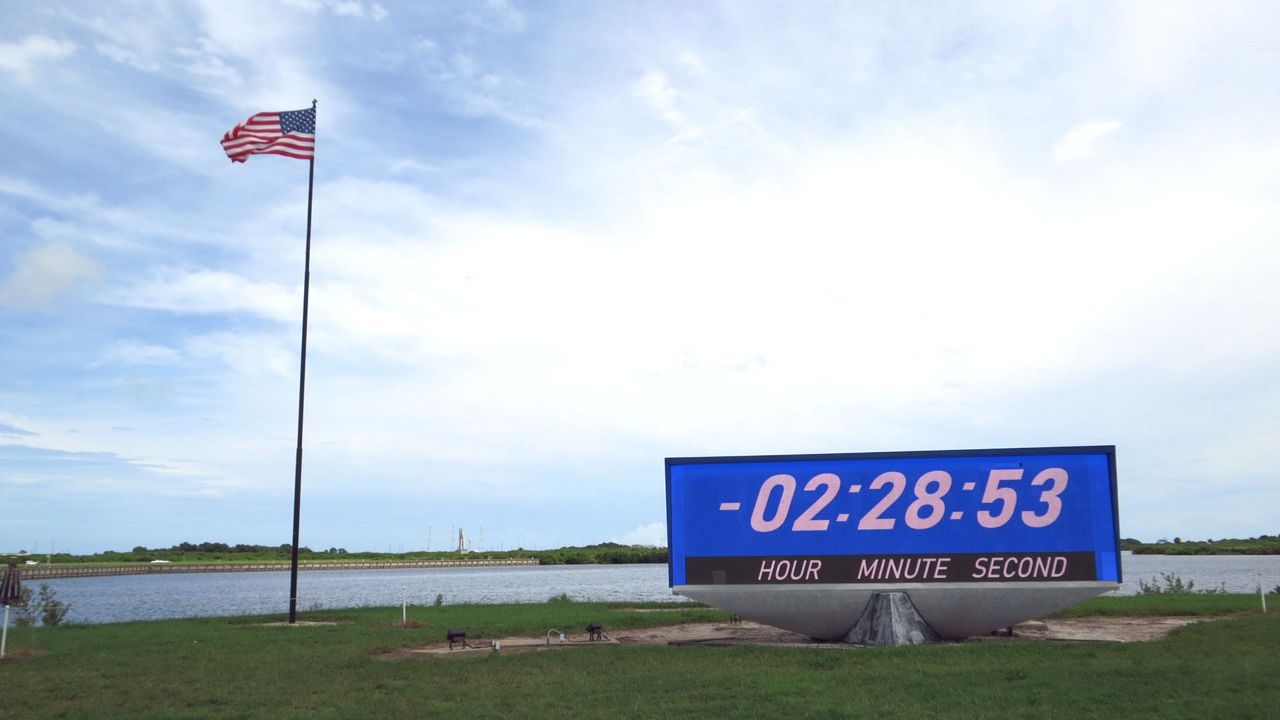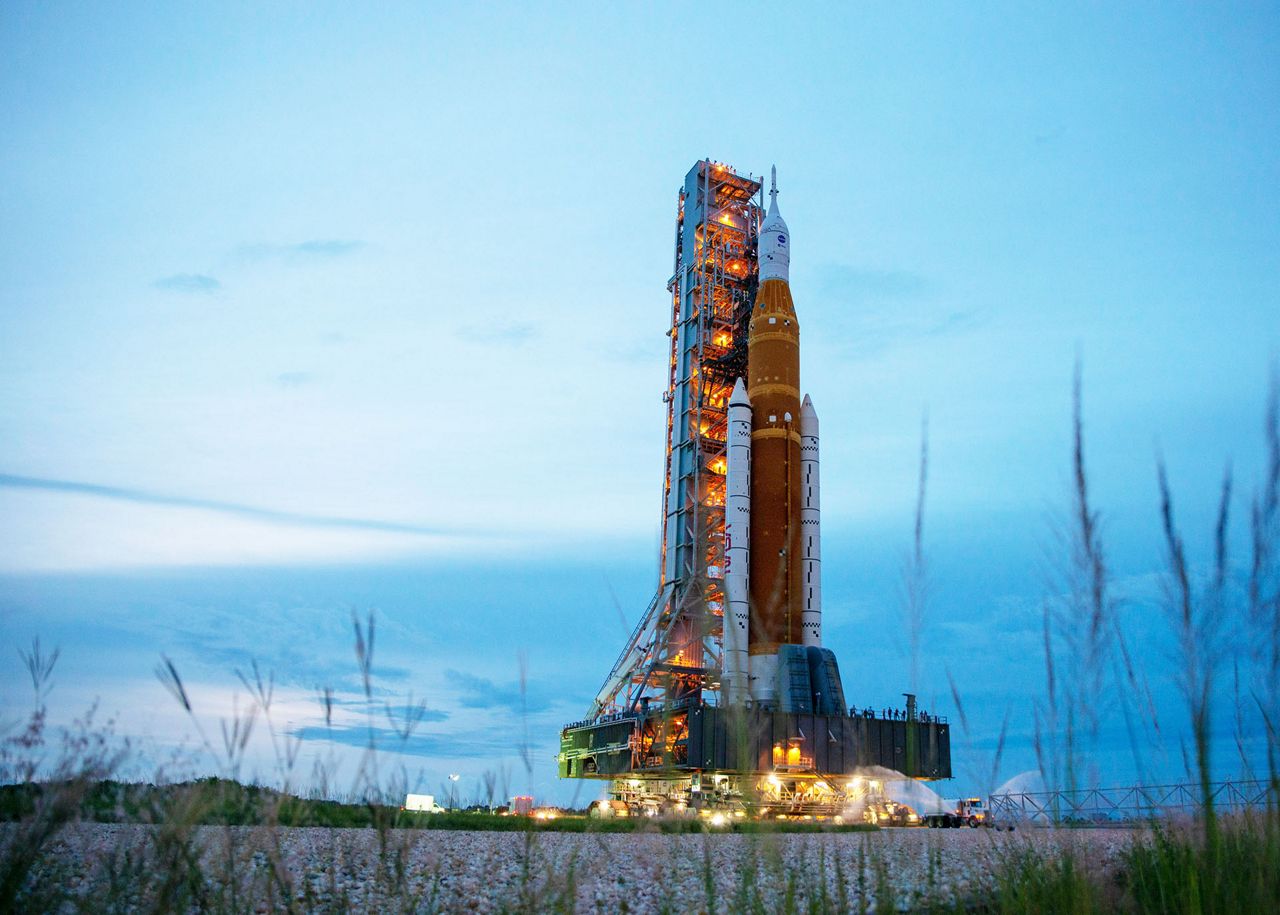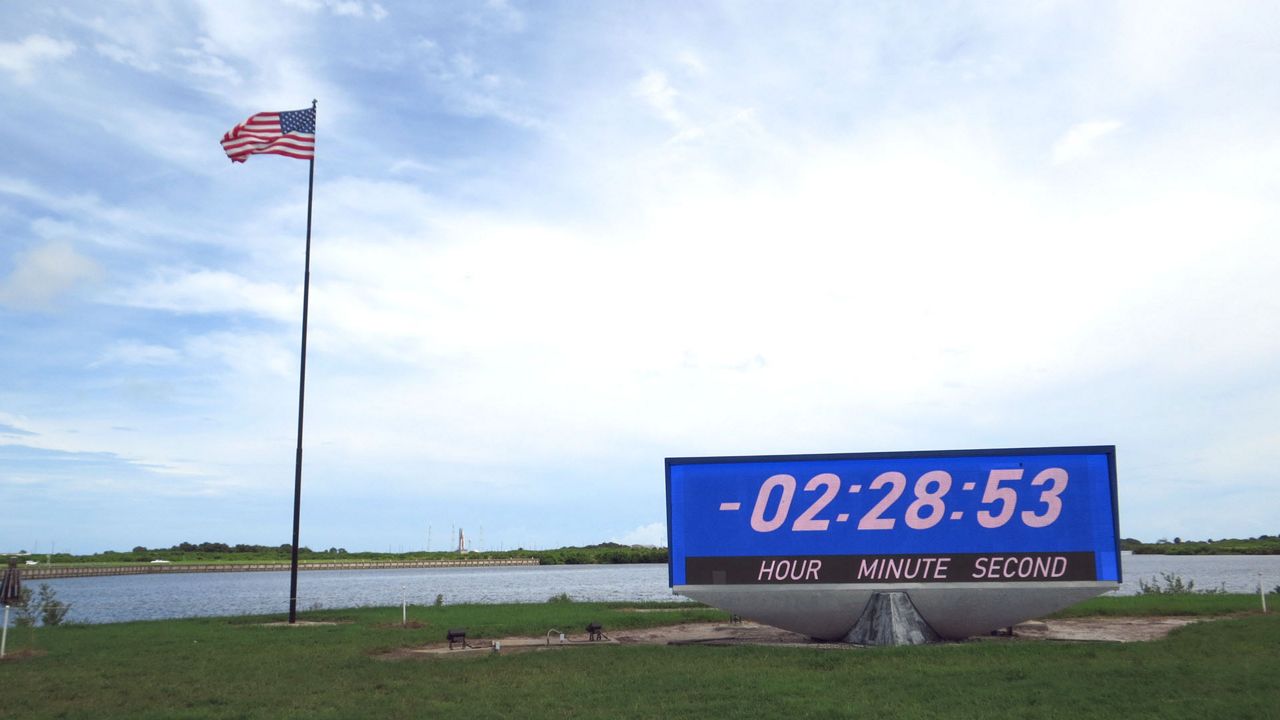KENNEDY SPACE CENTER — During an update on Thursday, NASA officials confirmed that they are still a go for the problem-plagued Artemis moon mission, as they eye a possible weather system.
What You Need To Know
- Artemis moon rocket and capsule will begin the roll out to the pad afternoon midnight Friday, Nov. 4
- Artemis I is scheduled to launch on Monday, Nov. 14
- Artemis has been having a hard time getting off the ground
Officials committed that Monday, Nov. 14, will be the launch date of the Artemis moon rocket Space Launch System and the Orion space capsule at 12:07 a.m. EST during a noon teleconference. The liftoff has a 69-minute launch window.
The Artemis I mission has been having a hard time getting off the ground and of the three attempts, liquid hydrogen leaks have been the main cause.
During the teleconference, Exploration Systems Development Mission Directorate’s Associate Administrator Jim Free said that NASA is keeping an eye on a weather system that may head toward Florida.
Spectrum News’ weather team is watching two areas in the western Atlantic that have a low chance of developing in the next five days.
However, Mike Burger, a launch weather officer of the 45th Weather Squadron, said that things look almost ideal for the launch in terms of weather constraints, but will keep an eye on those two systems as well as a rain system that is anticipated for some time next week.
And Free said that officials had a meeting about the weather conditions earlier Thursday but decided they were not an issue.
“… (we) came to the decision that we’re going to go ahead and roll out this evening in advance of our Nov. 14th launch attempt,” said Free. “I think we’re confident in the decision process that went into that.”
Weather was another issue for the Artemis mission since it was Hurricane Ian that scrubbed the third launch attempt back in September.
But since the rocket and space capsule have been back in the Vehicle Assembly Building due to Hurricane Ian, Cliff Lanham, NASA’s senior vehicle operations manager at the Exploration Ground Systems Program, assured that both vehicles are ready for the mission.
Since being in the Vehicle Assembly Building, engineers have performed minor repairs, maintenance and replacements of various components and equipment to the duo, NASA stated.
And Lanham echoed that and added that work has gone smoothly and the Orion batteries have been recharged and the secondary payload batteries have either been recharged or replaced, depending on what was required for each one.
He also said that the core stage flight termination system batteries were replaced. He added that the flight team is confident in the launch.
“Our launch team has been preparing for the next attempt and actually went through a full simulation launch,” Lanham confirmed.
In addition, 10 CubeSats (small satellites) will be onboard the Artemis I, but five of their batteries have been recharged, Lanham said, but admitted that the rest could not be recharged due to the ground equipment not being able to reach them.
During a question-and-answer session, many in the media asked why the launch has to be at night, however, NASA officials explained why that is not an issue.
“We don’t see it as a barrier to getting the data that we need in this launch period We’re limited by the days. We can launch based on the requirements that are put on us. In the end, we’re comfortable launching at night and we feel like we’re going to get the imagery that we need …,” Free explained.

The countdown clock for the second launch attempt of the Artemis I mission was stopped after a liquid hydrogen leak scrubbed the liftoff on Saturday, Sept. 03, 2022. (Spectrum News file photo/Anthony Leone)
Getting off the ground
NASA has not had much luck as engineers have worked hard to send the Space Launch System rocket and the Orion capsule off to the great beyond.
The first launch attempt was on Monday, Aug. 29, but a liquid hydrogen leak and engine temperature issues forced engineers to postpone the liftoff.
After those issues were resolved, the second attempt on Saturday, Sept. 3, was scrubbed after a different liquid hydrogen leak was discovered.
Engineers at NASA replaced two seals and later did a cryogenic demonstration test to see if the replacements to the fuel lines that go from the mobile launcher to the rocket were functioning.
Another liquid hydrogen leak was discovered, but NASA called the test a success since all the objectives were met and engineers were able to manage the leak and fill up the liquid hydrogen side of the rocket.
NASA officials tried for a third attempt on Tuesday, Sept. 27, but Hurricane Ian forced their hands to roll both the rocket and the spacecraft from Launch Pad 39B at the Kennedy Space Center to the Vehicle Assembly Building. Ian hit the Kennedy Space Center on Thursday, Sept. 29.
Since being in the Vehicle Assembly Building, engineers have performed minor repairs, maintenance and replacements of various components and equipment to the duo, NASA stated.

The Space Launch System rocket and the Orion spacecraft are seen on the mobile launcher as they were being shipped back to the Vehicle Assembly Building before Hurricane Ian hit. They will make a reverse journey back to Launch Pad 39B on Friday, Nov. 4, stated NASA. (NASA)
Going back to the pad
On Friday, Nov. 4, NASA plans to roll the rocket and spacecraft back to their temporary home on Launch Pad 39B, starting at 12:01 a.m. EST. The slow crawl back will take between six to 12 hours to make the 4-mile journey.
Despite the weather, Free said that NASA still plans to roll the rocket and Orion back to the launch pad.
“We are on track to roll back to the launch pad this evening,” Free said.
The Artemis program has three missions: Artemis I, Artemis II and Artemis III.
Artemis I is an uncrewed test flight that is designed to provide NASA with information that will be utilized for the two later missions. Currently, Artemis II is scheduled for 2024 (when astronauts will orbit the moon) and Artemis III is set for 2025, which will see the return to humans on the moon.




